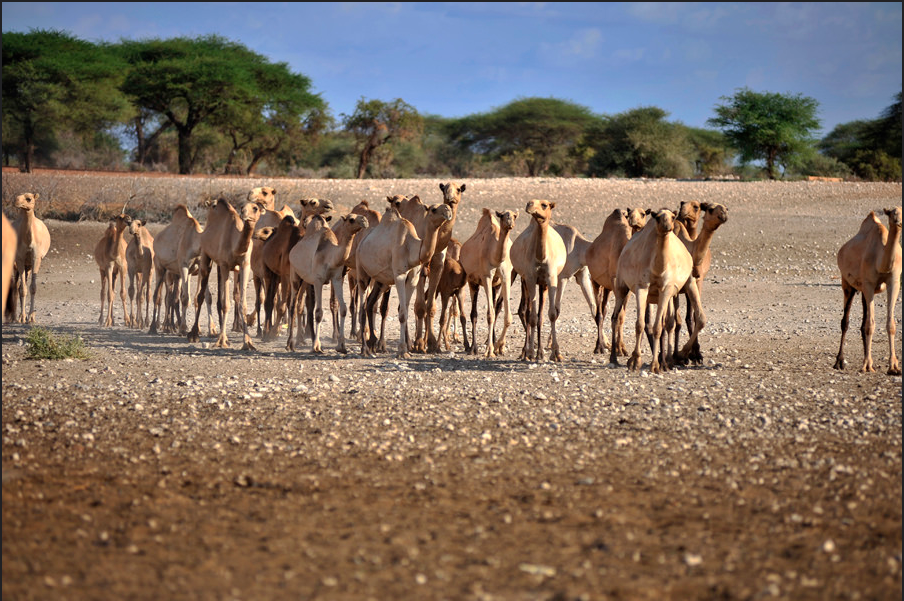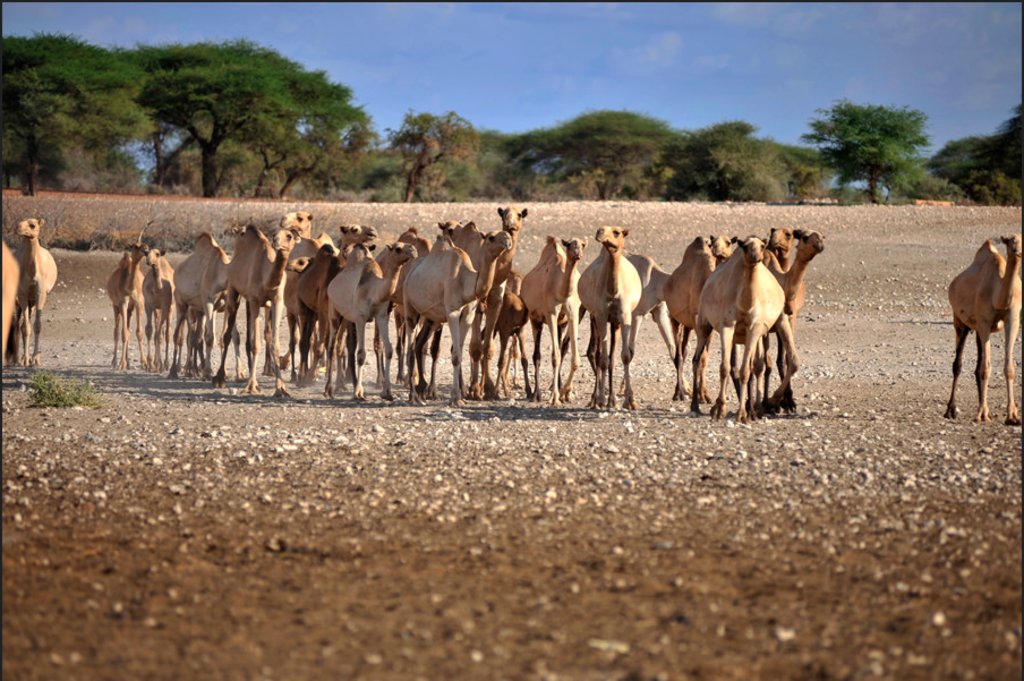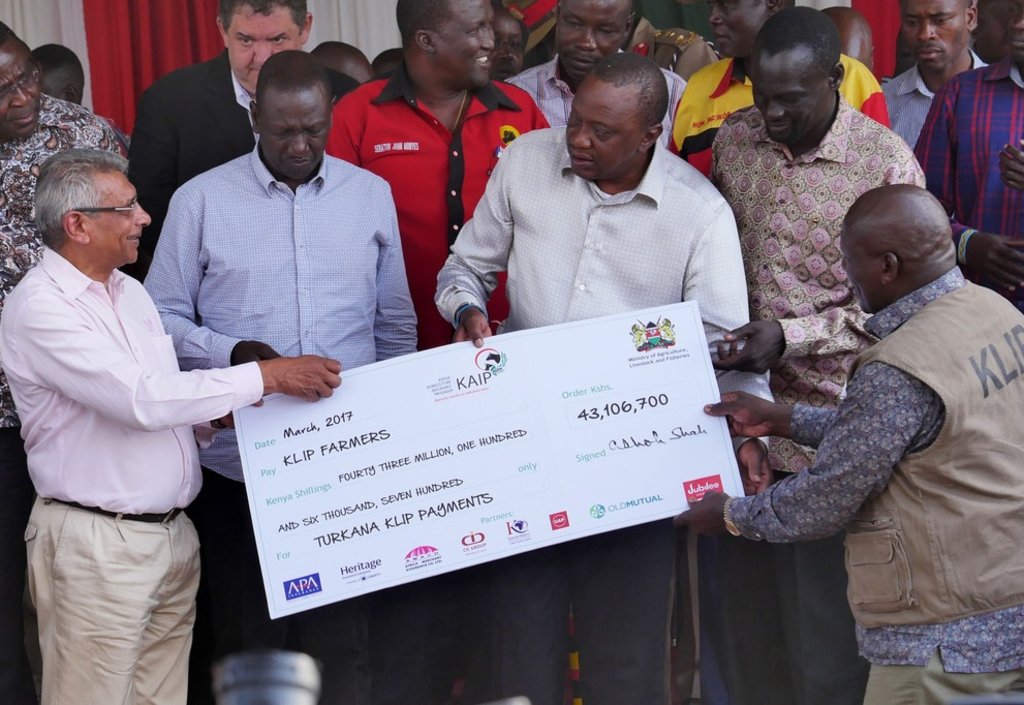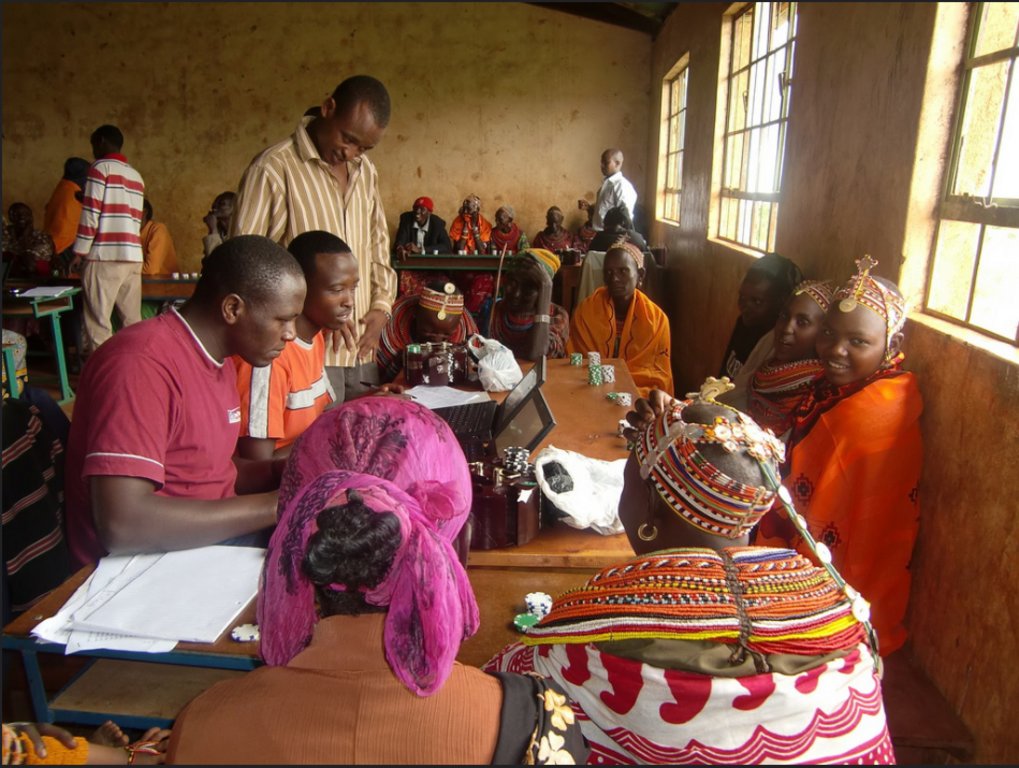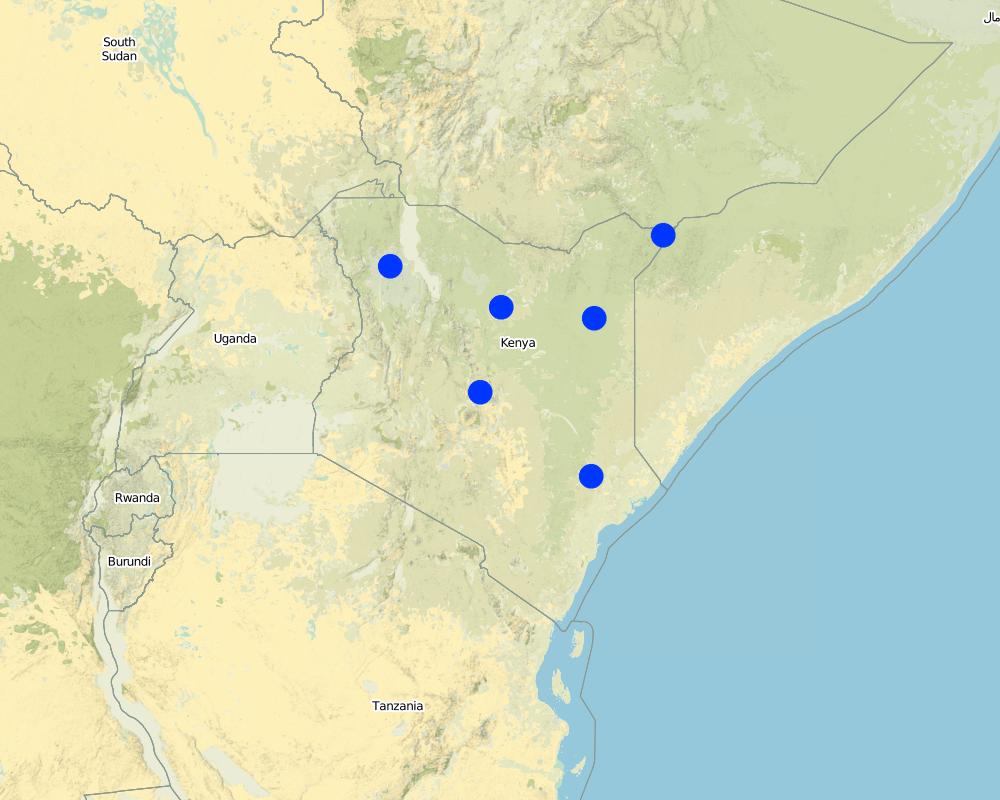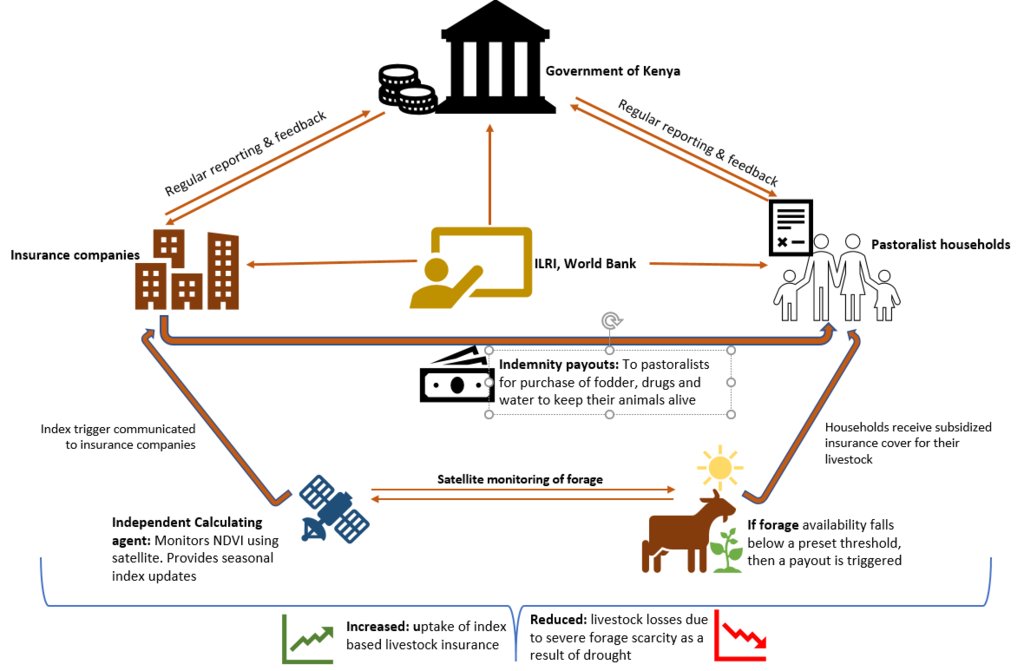Kenya Livestock Insurance Program (KLIP) [Kenya]
- Création :
- Mise à jour :
- Compilateur : Duncan Collins Khalai
- Rédacteur : –
- Examinateur : Rima Mekdaschi Studer
KLIP
approaches_3283 - Kenya
- Résumé complet en PDF
- Résumé complet en PDF pour impression
- Résumé complet dans le navigateur
- Résumé complet (non formaté)
- Programme d'assurance du bétail au Kenya (KLIP): 2 novembre 2021 (public)
- Programme d'assurance du bétail au Kenya (KLIP): 12 juillet 2018 (inactive)
- Programme d'assurance du bétail au Kenya (KLIP): 3 septembre 2018 (inactive)
- Kenya Livestock Insurance Program (KLIP): 7 juin 2018 (inactive)
- Kenya Livestock Insurance Program (KLIP): 23 mai 2018 (inactive)
- Kenya Livestock Insurance Program (KLIP): 13 mai 2018 (inactive)
- Kenya Livestock Insurance Program (KLIP): 27 février 2018 (inactive)
- Kenya Livestock Insurance Program (KLIP): 26 février 2018 (inactive)
- Kenya Livestock Insurance Program (KLIP): 14 janvier 2018 (inactive)
Voir les sections
Développer tout Réduire tout1. Informations générales
1.2 Coordonnées des personnes-ressources et des institutions impliquées dans l'évaluation et la documentation de l'Approche
Personne(s) ressource(s) clé(s)
Market & Capacity Development Specialist, IBLI, ILRI:
Nom du projet qui a facilité la documentation/ l'évaluation de l'Approche (si pertinent)
Index Based Livestock Insurance, Kenya (IBLI)Nom du ou des institutions qui ont facilité la documentation/ l'évaluation de l'Approche (si pertinent)
International Livestock Research Institute (ILRI) - Kenya1.3 Conditions relatives à l'utilisation par WOCAT des données documentées
Quand les données ont-elles été compilées (sur le terrain)?
23/11/2017
Le compilateur et la(les) personne(s) ressource(s) acceptent les conditions relatives à l'utilisation par WOCAT des données documentées:
Oui
2. Description de l'Approche de GDT
2.1 Courte description de l'Approche
The Government of Kenya (GoK) is implementing the Kenya Livestock Insurance Program (KLIP), with the overall objective of reducing the risk of livestock mortality emanating from drought and to build the resilience of vulnerable pastoralists for enhanced and sustainable food security. Currently under this program, GoK pays insurance premiums for a maximum of 5 Tropical Livestock Units (TLU), (whereby 1 TLU is approximately equivalent to 1 cow), on behalf of selected households that are considered vulnerable (i.e. own less that 5 TLUs). In case of severe forage scarcity as a result of drought, these particular households receive payouts to enable them purchase fodder, veterinary drugs and water to keep their animals alive. The expected impact on pastoralists’ livelihoods is protected assets and improved recovery from the drought shocks leading to better livelihoods. At national level reduced expenditure on humanitarian emergencies during the severe droughts and a sustained contribution of the livestock sub sector to the national economy is expected. As a Sustainable Land Management (SLM) solution, KLIP approach can contribute to reduced pressure on grazing lands by providing payouts which are used by pastoralists to purchase animal feeds from outside the KLIP counties during drought periods, leading to reduced land degradation.
2.2 Description détaillée de l'Approche
Description détaillée de l'Approche:
KLIP is a GoK funded drought insurance program for vulnerable pastoralists located in the Arid and Semi Arid Lands (ASALs) of Kenya. KLIP uses satellite data on vegetation cover to derive an index of seasonal forage availability/scarcity, called the Normalized Differenced Vegetative Index (NDVI). The index can be defined as a measure comparing the total amount of forage available across the contract season with the historic average forage availability of that season. When the index signals that forage conditions have deteriorated to the point that animals are likely to die, KLIP compensates pastoralists in cash payouts immediately after a failed rainy season(s) and just before the start of subsequent dry season to help pastoralists buy fodder, drugs and water to sustain their livestock.
Index insurance eliminates the need for insurance agents to be out in the field monitoring forage and animals, which, given the remote regions involved, would make livestock insurance logistically and financially impossible to provide. Instead satellite data (NDV) is used to calculate forage conditions in a specific area over a specific season in order to determine whether the index is below a set threshold below which payouts are triggered.This makes KLIP approach suitable for remote and infrastructure deficient areas such as Kenya's ASALs, and for pastoralists who move from one place to another in search of pasture and water for their animals.
The implementation of KLIP is done through a Public Private Partnership approach (PPP) spearheaded by the State Department of Livestock (SDL) under the Ministry of Agriculture, Livestock and Fisheries (MOALF). Private Insurance companies registered in Kenya provide underwriting services for KLIP. The World Bank Group provides financial and technical support while ILRI provides awareness and capacity development support together with KLIP contract design. Various capacity development and awareness creation tools e.g. radio programs, posters, flyers, cartoon booklets, videos and training manuals have so far been developed by SDL with support from ILRI targeting pastoralists, partners and policy makers. A contract design tool has also been developed for KLIP with the support of ILRI and the WBG.
2.3 Photos de l'approche
2.4 Vidéos de l'Approche
Commentaire, brève description:
This video summarizes the gains made since the launch of KLIP by the State Department of Livestock in Kenya. It describes the various roles played by partners in the Public Private Partnerships (PPP) approach used in implementing KLIP i.e. Government, Private sector and Non-governmental Institutions.
Lieu:
Kenya
Nom du vidéaste:
INTERNATIONAL LIVESTOCK RESEARCH INSTITUTE
2.5 Pays/ région/ lieux où l'Approche a été appliquée
Pays:
Kenya
Région/ Etat/ Province:
Isiolo, Mandera, Wajir, Tana river, Marsabit, Turkana
Autres spécifications du lieu :
Counties
Commentaires:
GoK plans to expand KLIP to all the 14 ASAL counties of Kenya
Map
×2.6 Dates de début et de fin de l'Approche
Indiquez l'année de démarrage:
2014
Si l'année précise est inconnue, indiquez approximativement quand l'Approche a démarré:
il y a moins de 10 ans (récemment)
2.7 Type d'Approche
- fondé sur un projet/ programme
2.8 Principaux objectifs de l'Approche
The overall objective of KLIP is to reduce the risk of livestock mortality emanating from drought and to build the resilience of vulnerable pastoralists for enhanced and sustainable food security. KLIP is intended to enhance the capacity of pastoral communities to minimize weather related risks through provision of index based livestock insurance.
KLIP's specific objectives are:
i) To build the resilience of vulnerable pastoralists in Kenya's ASALs against the consequences of drought by developing and applying index based insurance products in the provision of livestock insurance services to the vulnerable pastoralists
ii) To build capacities of the pastoral communities and stakeholders on the use of insurance for the reduction of weather related risks and rebuilding of livelihood support systems;
iii) To increase Public-Private-Partnerships (PPP) in the provision of index based livestock insurance to the vulnerable pastoralists whose livelihoods are dependent on livestock.
2.9 Conditions favorisant ou entravant la mise en œuvre de la(des) Technologie(s) appliquée(s) sous l'Approche
normes et valeurs sociales/ culturelles/ religieuses
- favorise
Apart from being the main source of livelihood for many of the communities living in Kenya's ASALs, pastoral-ism is a cultural practice that has been passed on from generation to generation. Pastoralists aspire to protect their herds from all manner of perils, including drought related livestock losses.
- entrave
Most pastoralists living in Kenya's ASALs are predominantly Muslims. The belief that rainfall or drought are both God's fate upon man, and therefore human beings should not try to control/mitigate against such, is a myth that hinders implementation of index based insurance. There is also the concern of whether insurance is "hala" in the context of Islamic Shariah. Both of these challenges have been widely addressed in the implementation of KLIP through awareness creation and sensitization efforts done in consultation and involvement of national and local religious leaders together with insurance companies and the local communities.
disponibilité/ accès aux ressources et services financiers
- favorise
Financial support for KLIP mainly from GoK and the World Bank Group. This has been a great enabling factor as huge financial investment is required in for premium purchases, awareness creation, operations e.t.c.
- entrave
Bureaucratic processes involved in the steps towards policy formulation puts at risk the guarantee for continued funding from the government of Kenya especially in case of regime change. Efforts are being made to influence and initiate policy formulation at the national level. The SDL has also approached county governments where KLIP is being implemented to encourage them to contribute towards the scheme, in order to cover their local communities.
collaboration/ coordination des acteurs
- favorise
KLIP has leveraged upon academic research, advocacy, private sector partnerships, NGOs and other stakeholders working to improve the livelihoods in the pastoralist range-lands of Kenya. It has managed to tap into emerging innovations and insights from past works done for instance by ILRI and her partners such as AUSAID, DFID, USAID, Cornell University, European Union in the implementation of Index Based Livestock Insurance (IBLI), managing to further draw on both the knowledge generated and lessons learned.
cadre politique
- favorise
KLIP enjoys the goodwill of the Insurance Regulatory Authority (IRA) and other key stakeholders who are willing to support advocacy at the national treasury and the national assembly (parliament) of Kenya to create an enabling environment for the scale up of KLIP and further commercialization of index insurance by private local insurance companies and other financial sector players.
connaissances sur la GDT, accès aux supports techniques
- favorise
Access to technical support by the GoK from both ILRI and World bank especially for KLIP contract design and index monitoring together with requisite capacity development and awareness creation have enabled effective roll out and implementation.
3. Participation et rôles des parties prenantes impliquées dans l'Approche
3.1 Parties prenantes impliquées dans l'Approche et rôles
- exploitants locaux des terres / communautés locales
Pastoralists, also known as KLIP beneficiaries
Pastoralists households who are vulnerable to drought shocks are the primary beneficiaries in the implementation of KLIP. They receive timely cash payouts at the onset of drought in order to keep their livestock alive.
- secteur privé
Insurance companies
Private insurance companies underwrite the KLIP product either individually or as a consortium. The underwriting insurer is expected to distribute payouts whenever the index is triggered to beneficiaries listed on KLIP. The selection of the insurer based on its capacity to underwrite the risk, develop new or strengthen existing products in line with government policy and provide livestock insurance capacity building and awareness creation services. Underwriting insurers are also in charge of marketing the product and explaining its features to (potential) policyholders.
- gouvernement local
County governments in the target ASAL areas
The national government utilizes county governments infrastructure for the implementation of KLIP. Counties provide support to the national government in sensitization, mobilization and selection of benefiting pastoralists for the fully subsidized KLIP component. The county governments also provide support during payouts and monitoring and evaluation activities. Some county governments are exploring the possibility of contributing to the public financial support to premiums to match what is currently provided by the national government.
- gouvernement national (planificateurs, décideurs)
The government of Kenya, the State Department of Livestock (SDL) under the Ministry of Agriculture Livestock and Fisheries
The GoK purchases KLIP policies on behalf of the pastoralists targeted under the KLIP program. However, in case of an insurance payout, indemnified households receive their respective share of the payout directly from the underwriting insurance company/ies.
- organisation internationale
Development partners such as the World Bank and ILRI
The World Bank Group provides KLIP funding to the GoK and is the principal technical adviser to SDL on KLIP. ILRI is responsible for providing technical assistance to SDL on all issues relating to insurance product design, management and improvement, as well as training and awareness creation. ILRI’s contributions are based on their experience developing, implementing and assessing an Index-Based Livestock Insurance (IBLI) program since 2008 (http://ibli.ilri.org/).
3.2 Participation des exploitants locaux des terres/ communautés locales aux différentes phases de l'Approche
| Participation des exploitants locaux des terres/ communautés locales | Spécifiez qui était impliqué et décrivez les activités | |
|---|---|---|
| initiation/ motivation | interactive | The GoK was motivated to implement KLIP in order to protect vulnerable communities from livestock losses due to drought and also accelerate further uptake of livestock insurance by pastoralist by experiencing how the product works. |
| planification | interactive | KLIP exemplifies the case of a multi-stakeholder participatory approach linking scientific analysis with local knowledge, while facilitating the awareness, understanding and acceptance of the product by local communities. Activities such as; delineation of geographic areas that constitute an insurable unit and selection of KLIP beneficiaries are conducted through transparent and participatory means. |
| mise en œuvre | interactive | KLIP is implemented by the SDL with support from World Bank and ILRI in collaboration with local private insurance companies which underwrite the product either individually or as a consortium. County governments and local NGOs are also involved in the implementation of KLIP. |
| suivi/ évaluation | interactive | KLIP, M & E largely relies on acquiring information from management and project records that reflect on program resource use and implementation. Primary data collection from key stakeholders is also used. Outcome measurement uses a combination of both qualitative and quantitative methods. Data collection for high level outcomes, for instance the impact of KLIP on household welfare, will require the use of official country level data or relying on countrywide surveys, since these outcomes are normally outside the full control of the program. |
| interactive |
3.3 Diagramme/ organigramme (si disponible)
Description:
The GoK purchases policies on behalf of selected vulnerable pastoralists or beneficiaries located in KLIP counties Kenya's ASALs. KLIP beneficiries are pastoral households whose livelihoods are entirely dependent on livestock and are susceptible to climate uncertainties and recurrent droughts. They are considered to have limited alternative sources of livelihoods and any disruptions to livestock assets lead to destitution. The beneficiaries are selected through participatory community meetings convened by local chiefs and opinion leaders with the support of county government agricultural extension officers. The main criteria for selection is that each household must own less than 5 Tropical Livestock Units (TLU), which is approximately 5 cows i.e. 1TLU = 1 cow.
A calculating agent is an entity appointed by the Insurer (with the agreement of the Insured), and is is responsible for: (i) accessing eModis NDVI data during the Cover Period and (ii) for processing this data to calculate the index value in accordance with the agreed methodology for each Insured Unit in each Insured county during the cover period and (iii) for reporting this data to the Insurer and the Insured on a timely basis.
Once the index is triggered, the calculating agent notifies the insurance company and the SDL. Cash payouts are are prepared by the insurance company and disbursed to the registered beneficiary households through mobile money transfers e.g. M-Pesa (available in Kenya), bank transfers and cheques. The payouts are used by pastoralist to purchase fodder, veterinary drugs and water for their livestock to sustain them during the drought period.
KLIP is underwritten by private insurance companies either individually or as a consortium. Insurance companies are selected based on capacity to underwrite the risk, develop new or strengthen existing products in line with government policy, provide livestock insurance capacity building services, and offer voluntary cover besides the subsidized one offered by the government.
Auteur:
Duncan C. Khalai
3.4 Prises de décision pour la sélection de la Technologie/ des Technologies
Indiquez qui a décidé de la sélection de la Technologie/ des Technologies à mettre en œuvre:
- tous les acteurs concernés dans le cadre d'une approche participative
Spécifiez sur quelle base ont été prises les décisions:
- l'évaluation de connaissances bien documentées en matière de GDT (prises de décision fondées sur des preuves tangibles)?
4. Soutien technique, renforcement des capacités et gestion des connaissances
4.1 Renforcement des capacités/ formation
Une formation a-t-elle été dispensée aux exploitants des terres/ autres parties prenantes?
Oui
Spécifiez qui a été formé:
- exploitants des terres
- personnels/ conseillers de terrain
Formats de la formation:
- entre agriculteurs (d'exploitants à exploitants)
- réunions publiques
- cours
Thèmes abordés:
1. Introduction to KLIP and KLIP key features
a. Contract features
b. KLIP coverage
2. Beneficiary selection & registration
3. KLIP communication and awareness creation – Managing interactions with other programs
4. KLIP Voluntary and fully subsidized products - features and differences
5. County governments and State Department of Livestock coordination
Commentaires:
A general training course, whose content elaborates how index based livestock insurance works was developed and distributed in form of an e-learning platform available fro registration at http://learning.ilri.org. The same course is also available in form of physical manuals and simplified pictorial books.
4.2 Service de conseils
Les exploitants des terres ont-ils accès à un service de conseils?
Oui
Spécifiez si le service de conseils est fourni:
- dans des centres permanents
Décrivez/ commentez:
A Program Coordination Unit (PCU) comprising of a program coordinator and 2 technical officers i.e. an M&E specialist and a Networking and Capacity development specialist were constituted under the SDL. The PCU is responsible for implementing the program and its day to day operations. Each technical officer is responsible for specific components of the program. Advisory communication via phone and email are frequently conducted between the KLIP implementation counties and the PCU. The PCU also supports recruitment of beneficiaries, training, awareness, M&E and communication for KLIP beneficiaries, various stakeholders and partners. ILRI provides support to these activities through its Markets and Capacity development unit. The PCU also provides reports to county governments on all KLIP related aspects including; the status of the index, number and identity of beneficiaries and the amount of indemnities paid.
4.3 Renforcement des institutions (développement organisationnel)
Des institutions ont elles été mises en place ou renforcées par le biais de l'Approche?
- oui, modérément
Spécifiez à quel(s) niveau(x), ces institutions ont été renforcées ou mises en place:
- local
- régional
- national
Décrivez l'institution, ses rôles et responsabilités, ses membres, etc.
At the National level; the KLIP coordination unit under the Ministry of Agriculture, Livestock and Fisheries is responsible for the following:
-To develop, and institutionalize a large-scale sustainable livestock insurance program for the Arid and Semi-Arid Lands
-Efficient and effective engagement of relevant stakeholders
-Influencing policy
-Develop and maintain Public Private Partnerships
-To institutionalizing provision of livestock insurance at national and county government levels for increased resilience of vulnerable pastoralists
-Sustained demand of livestock insurance
Regional governments (Counties) are responsible for the following:
- Support access to appropriate livestock insurance products - registration of beneficiaries, extension and awareness creation
International NGOs i.e. The World Bank Group (WBG) provides funding to the GoK and is also the principal technical adviser to the SDL on KLIP. ILRI is also funded by the World Bank Group to provide technical support around KLIP contract design, awareness creation and capacity development.
Précisez le type de soutien:
- financier
- renforcement des capacités/ formation
4.4 Suivi et évaluation
Le suivi et l'évaluation font ils partie de l'Approche? :
Oui
Commentaires:
A monitoring and evaluation framework is in place to ensure that the program is constantly improved and that it can respond to challenges and opportunities arising in the field. The M&E framework is a tool for continuous program planning, implementation and reflection and also used for day-to-day reporting and tracking of progress towards outcomes and long-term impacts. The M&E frameworks's principle purposes are summarized below:
• Tracking progress on program implementation
• Identifying gaps and weaknesses in the implementation process
• Planning, prioritizing, allocating and managing resources during the entire program timeline
• Providing lessons for program management
Regular technical reports are generated by the PCU to be submitted to the KLIP technical committee for their technical inputs.
Si oui, ce document est-il destiné à être utilisé pour le suivi et l'évaluation?
Non
Commentaires:
KLIP M&E frame work is available
4.5 Recherche
La recherche a-t-elle fait partie intégrante de l’Approche?
Oui
Spécifiez les thèmes:
- sociologie
- économie/ marketing
- technologie
Donnez plus de détails et indiquez qui a mené ces recherches:
A livestock insurance service for Kenya's ASALs was tested with remarkable success on a pilot basis by the International Livestock Research Institute (ILRI's) Index Based Livestock Insurance (IBLI) from 2010 –2015 supported by DfID, AUSAID, USAID and other development partners. The lessons drawn from this experience were incorporated in the inception and implementation of KLIP.
5. Financement et soutien matériel externe
5.1 Budget annuel de la composante GDT de l'Approche
Si le budget annuel précis n'est pas connu, indiquez une fourchette:
- > 1 000 000
Commentez (par ex. principales sources de financement/ principaux bailleurs de fonds):
The main source of funding for the KLIP project is from the government of Kenya and the World Bank.
5.2 Soutiens financiers/ matériels fournis aux exploitants des terres
Les exploitants des terres ont-ils reçu un soutien financier/ matériel pour la mise en œuvre de la Technologie/ des Technologies?
Oui
Si oui, spécifiez le(s) type(s) de soutien, les conditions et les fournisseurs:
Over 14,000 (number expected to rise to 18,000 with intended scale) households currently under KLIP receive fully subsidized livestock insurance cover where the government of Kenya fully funds the premiums for these pastoralists for a maximum of 5 cows (5 TLU). However the SDL plans to roll out a voluntary KLIP cover, which can be purchased by any interested pastoralist. Further considerations are underway to assess the possibility of making voluntary insurance more accessible and affordable to pastoralists by partial premium subsidies.
5.3 Subventions pour des intrants spécifiques (incluant la main d'œuvre)
- intrants agricoles
| Spécifiez les intrants subventionnés | Dans quelle mesure | Spécifiez les subventions |
|---|---|---|
| Insurance Premiums | entièrement financé | The government pays premiums on behalf of the pastoralists but is the policy holder. However, in-case a payout is triggered, the pastoralists receive the indemnity directly. Over time, the GoK plans to reduce the size of public support by transitioning into voluntary type of insurance. |
5.4 Crédits
Des crédits ont-ils été alloués à travers l'Approche pour les activités de GDT?
Non
5.5 Autres incitations ou instruments
D'autres incitations ou instruments ont-ils été utilisés pour promouvoir la mise en œuvre des Technologies de GDT?
Oui
6. Analyses d'impact et conclusions
6.1 Impacts de l'Approche
Est-ce que l'Approche a autonomisé les exploitants locaux des terres, amélioré la participation des parties prenantes?
- Non
- Oui, un peu
- Oui, modérément
- Oui, beaucoup
KLIP has facilitated regular stakeholder interactions leveraging various partnerships forged within its PPP framework. Local communities, county governments, national government and NGOs are all engaged in the quest to find solutions for the pastoralists, who face repetitive cycles of devastating droughts.
Est-ce que l'Approche a permis la prise de décisions fondées sur des données probantes?
- Non
- Oui, un peu
- Oui, modérément
- Oui, beaucoup
KLIP has largely enabled evidence based decision making, considering the increasing annual financial allocations it has received from the national treasury. Other donors e.g. the World Bank continue to support KLIP implementation as well as increased interest from county governments to provide additional funding towards the program.
Est-ce que l'Approche a aidé les exploitants des terres à mettre en œuvre et entretenir les Technologies de GDT?
- Non
- Oui, un peu
- Oui, modérément
- Oui, beaucoup
The impact of KLIP on the target population with regards to land use and maintenance of SLM technologies is not yet observable as KLIP is only 3 years into implementaion. Rigourous impact analysis may need to be conducted to establish such impacts. However, the rising demand for the KLIP product both from the insurance companies (supply side) and the pastoralists (demand side) is an indication of maintaince of of the SLM (KLIP)
Est-ce que l'Approche a mobilisé/ amélioré l'accès aux ressources financières pour la mise en œuvre de la GDT?
- Non
- Oui, un peu
- Oui, modérément
- Oui, beaucoup
Advocacy efforts have been directed at raising decision makers’ awareness on the benefits of KLIP is having and the potential it holds for pastoralist communities country wide. County governments and donors need to appreciate and be motivated towards playing a key role in the implementation KLIP.
Est-ce que l'Approche a amélioré les connaissances et les capacités des exploitants des terres pour mettre en œuvre la GDT?
- Non
- Oui, un peu
- Oui, modérément
- Oui, beaucoup
Insurance as a concept is complex and regulated entities in the sector seldom commit resources for awareness creation other than marketing of their individual products. KLIP implementation takes into account this situation and has continuously undertaken publicity and awareness creation about insurance with the aim to ensure consumers know and understand the concept of insurance and can make informed judgments and to take effective decisions in an insurance transaction.
Est-ce que l'Approche a amélioré les connaissances et les capacités des autres parties prenantes?
- Non
- Oui, un peu
- Oui, modérément
- Oui, beaucoup
KLIP implementation has capacity development as one of its key components, which entails developing tools and materials that help support training, extension and awareness creation on KLIP's agenda. Various government, Insurance, County and Community members have undergone KLIP training at distinct levels.
Est-ce que l'Approche a construit/ renforcé les institutions, la collaboration entre parties prenantes?
- Non
- Oui, un peu
- Oui, modérément
- Oui, beaucoup
Since its inception in 2014, KLIP has thrived on collaborations among various state and non state actors. The State Department of World Bank Group, the International Livestock Research Institute (ILRI) and the Financial Sector Deepening Kenya (FSD), private local insurers (APA Insurance Ltd., UAP Insurance, CIC Insurance, Jubilee Insurance, Amaco Insurance, Heritage Insurance, Kenya Orient) and one global reinsurer (Swiss Re)).
Est-ce que l'Approche a autonomisé les groupes socialement et économiquement défavorisés?
- Non
- Oui, un peu
- Oui, modérément
- Oui, beaucoup
ILRI conducted a phone survey in 2017, where 643 phone numbers registered to beneficiaries under the KLIP program were selected out of the total 14,000 beneficiaries. Out of the 643, 337 beneficiaries were reached and out of these 300 were surveyed (37 either had no time or did not consent). Questions were asked about the Short Rain Short Dry 2016 and Long Rain Long Dry 2017 seasons. Of the 300 surveyed, 129 reported receiving KLIP payments associated with the SRSD 2016 drought. Out of these 58% indicated having spent the money on food. Based on this therefore, it can be noted that KLIP has moderatley contributed to social and economic empowerment of disadvantaged groups.
xxxxx
Est-ce que l'Approche a conduit à améliorer la sécurité alimentaire et/ou la nutrition?
- Non
- Oui, un peu
- Oui, modérément
- Oui, beaucoup
Under the same study described above, out of 300 beneficiaries surveyed, 129 reported receiving KLIP payments associated with the SRSD 2016 drought, 75 (58%) of these, reported having spent the cash on food stuff for their households.
The KLIP study above also indicated increased access to markets as respondents were asked how they changed their response to the drought once they knew that the KLIP payouts were coming. Out of the 63 respondents to this question, more than 50% indicated that they increased purchase of, veterinary drugs & services together with forage and water for their animals.
There is no evidence linking sustainable use of energy to KLIP
Est-ce que l'Approche a amélioré la capacité des exploitants des terres à s'adapter aux changements/ extrêmes climatiques et a atténué les catastrophes liées au climat?
- Non
- Oui, un peu
- Oui, modérément
- Oui, beaucoup
KLIP has so far been able to enhance the capacity of pastoral communities to minimize weather related risks through provision of index based livestock insurance build the resilience of vulnerable pastoralists in Kenya's ASALs.
6.2 Principale motivation des exploitants des terres pour mettre en œuvre la GDT
- réduire les risques de catastrophe
A large-scale livestock insurance program could help to protect core breeding herd assets thereby building drought resilience and contributing to improved livelihoods and incomes for the pastoralists.
- paiements/ subventions
KLIP implementation is organized in two key payment/ subsidy based components that are being implemented in a phased approach:
Fully subsidized KLIP: Under this component, the GoK purchases index insurance on behalf of selected vulnerable pastoralists in the ASALs. GoK pays the premiums for up to 5 TLU for only the selected households. Over time, the government plans to reduce the size of public support through the provision of a partially subsidized cover. Under this approach, any household, whether beneficiary of the fully supported KLIP or not, shall have the opportunity to purchase index insurance at market rates. Eventually the government hopes to achieve higher uptake of index based livestock insurance by pastoralists on a commercial basis.
- améliorer les connaissances et compétences en GDT
Extension services, distribution of KLIP awareness materials, radio programs, workshops and structured community engagements are part of the SDL and partners' efforts to enhance knowledge and skills on KLIP.
6.3 Durabilité des activités de l'Approche
Les exploitants des terres peuvent-ils poursuivre ce qui a été mis en œuvre par le biais de l'Approche (sans soutien extérieur)?
- incertain
Si non ou incertain, spécifiez et commentez:
KLIP is structured in a double pronged approach meant to ensure scale up and sustainability, however uncertainty over the program's sustainability emanates from the lack of government policies that can guarantee continuity. Efforts are still ongoing to ensure such policies are in place.
6.4 Points forts/ avantages de l'Approche
| Points forts/ avantages/ possibilités du point de vue de l'exploitant des terres |
|---|
| High level support from the government and development partners is a strength for KLIP as it continues to attract goodwill from key stakeholders within and outside government. |
| KLIP is anchored on a reliable, simple and trusted technology - index based livestock insurance, which is a product of rigorous research. |
| KLIP's impacts and lessons are replicable and scalable in other geographical locations |
6.5 Faiblesses/ inconvénients de l'Approche et moyens de les surmonter
| Faiblesses/ inconvénients/ risques du point de vue de l’exploitant des terres | Comment peuvent-ils être surmontés? |
|---|---|
| Full commercialization of livestock insurance might be a challenge to achieve considering that the private sector, especially insurance companies is profit oriented and might not be fully motivated to venture into the hard to reach, remote and poorly infrastructured ASALs of Kenya where KLIP is implemented. | Continuous capacity development and proper policy environment should be created to enable private sector's desire to venture into the target regions and fully commercialize the product |
| Sustainability – There is no policy on KLIP. Its therefore not a guaranteed possibility that the government will support this in the long term | Continued advocacy, lobbying and sensitization need to be done targeting the key policy makers. Also a proper exit strategy should be designed and put into action. |
7. Références et liens
7.1 Méthodes/ sources d'information
- compilation à partir de rapports et d'autres documents existants
7.2 Références des publications disponibles
Titre, auteur, année, ISBN:
N/A
7.3 Liens vers les informations pertinentes disponibles en ligne
Titre/ description:
Successful Kenya Livestock Insurance Program scheme scales up
URL:
http://www.swissre.com/reinsurance/successful_Kenya_livestock_insurance_program_scheme_scales_up.html
Titre/ description:
Govt to release record cash payout in livestock insurance program
URL:
https://www.capitalfm.co.ke/business/2017/03/govt-to-release-record-cash-payout-in-livestock-insurance-program/
Titre/ description:
APA Pay The First Major Claim To The Kenya Livestock Insurance Program (KLIP) Farmers
URL:
http://www.apainsurance.org/news/apa-pay-the-first-major-claim-to-the-kenya-livestock-insurance-program-klip-farmers/
Titre/ description:
SATELLITE, MOBILE TECHNOLOGIES UNDERPIN INSURANCE PAYOUT TO HERDERS IN KENYA
URL:
https://www.iii.org/insuranceindustryblog/?tag=kenya-livestock-insurance-program
Titre/ description:
Record payouts being made by Kenya Government and insurers to protect herders facing historic drought
URL:
https://ibli.ilri.org/2017/02/22/record-payouts-being-made-by-kenya-government-and-insurers-to-protect-herders-facing-historic-drought/
Liens et modules
Développer tout Réduire toutLiens
Aucun lien
Modules
Aucun module trouvé


